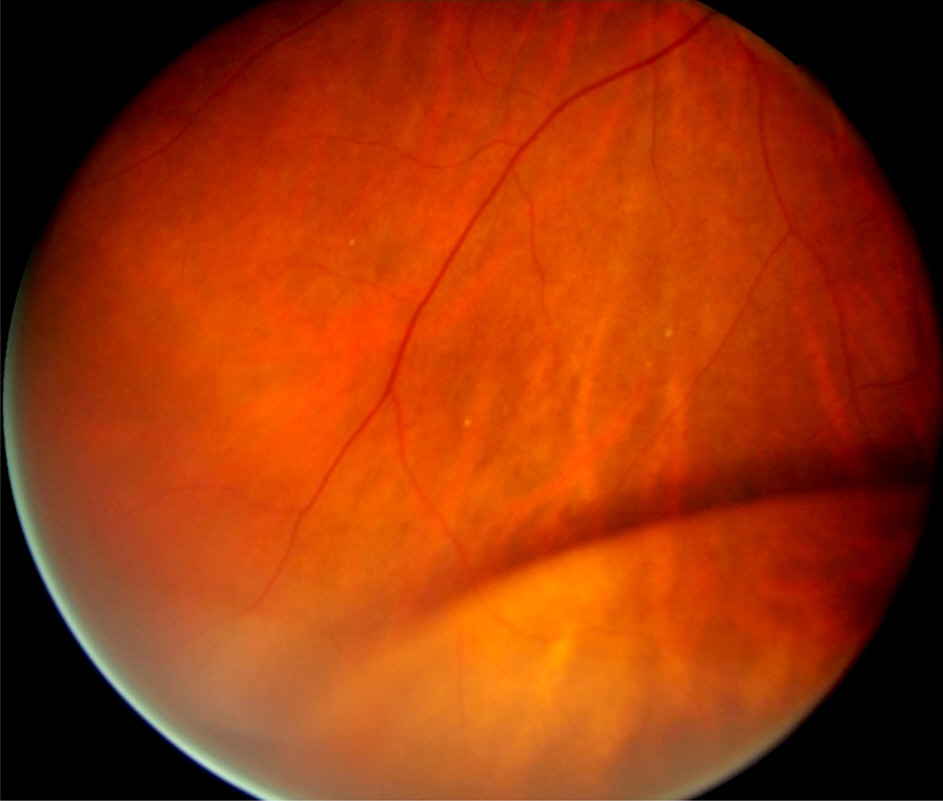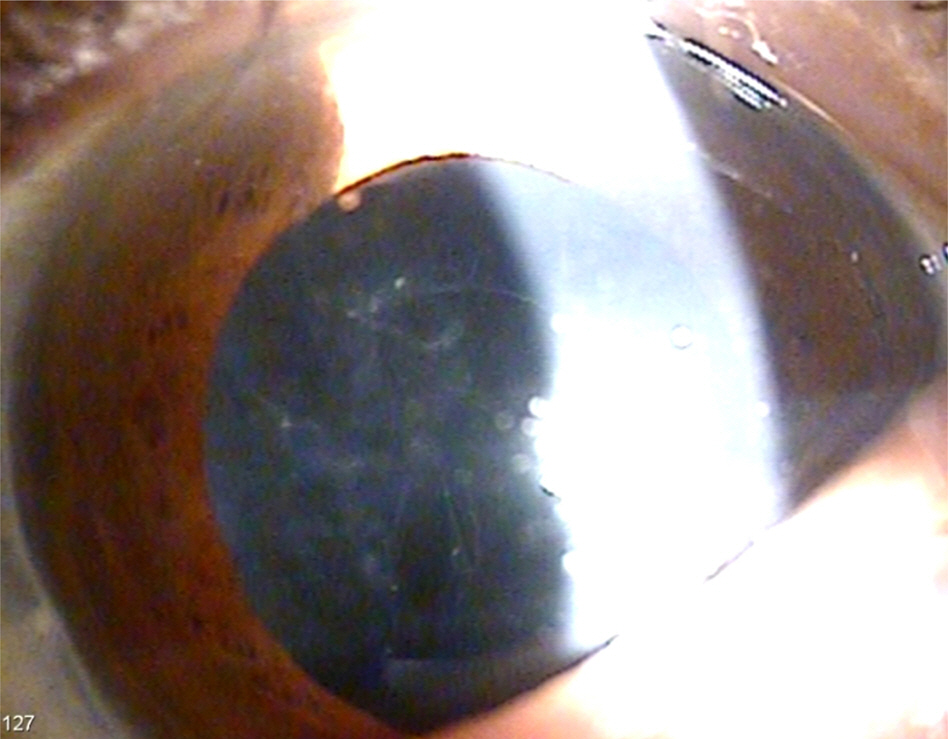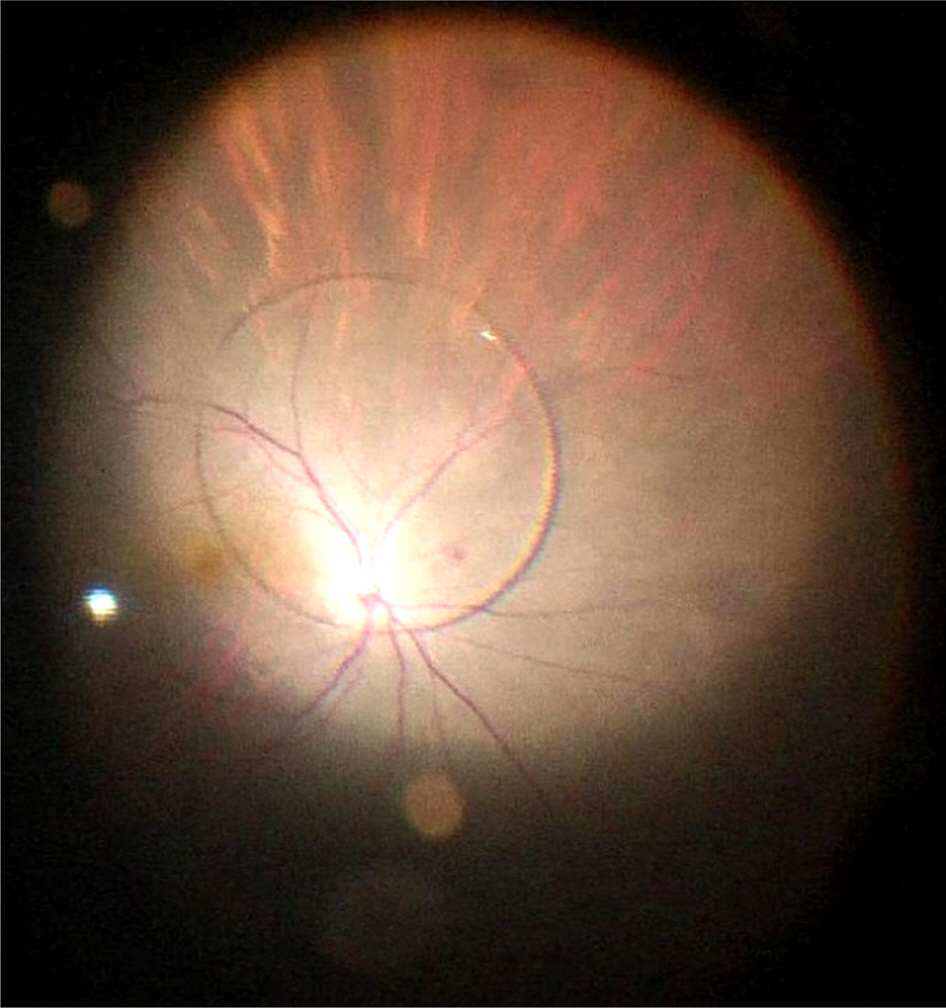J Korean Ophthalmol Soc.
2015 Mar;56(3):443-446. 10.3341/jkos.2015.56.3.443.
Two Cases of WIOL-CF(R) IOL Dislocation after Nd:YAG Laser Capsulotomy
- Affiliations
-
- 1Department of Ophthalmology, Gyeongsang National University School of Medicine, Jinju, Korea. in0chung@hanmail.net
- 2Gyeongsang Institute of Health Science, Gyeongsang National University, Jinju, Korea.
- KMID: 2339053
- DOI: http://doi.org/10.3341/jkos.2015.56.3.443
Abstract
- PURPOSE
To report 2 cases of WIOL-CF(R) intraocular lens (IOL) (Gelmed International, Kamenne Zehrovice, Czech Republic) dislocation after neodymium-doped yttrium aluminum garnet (Nd:YAG) laser capsulotomy.
CASE SUMMARY
A 78-year-old female was referred for IOL dislocation. She was implanted with WIOL-CF(R) IOL 18 months prior. Two months after WIOL-CF(R) implantation, she received Nd:YAG laser capsulotomy at a local clinic. Pars plana vitrectomy and transscleral fixation of IOL were performed.
CONCLUSIONS
This is the first report of WIOL-CF(R) IOL dislocation after Nd:YAG laser capsulotomy in unvitrectomized eyes. When Nd:YAG laser capsulotomy is performed after WIOL-CF(R) IOL implantation, IOL dislocation should be considered even in unvitrectomized eyes.
Keyword
Figure
Reference
-
References
1. Kim HJ, Seo JW, Shin SJ, Chung SK. Visual outcome and stability of hydrogel full-optics accommodative intraocular lens. J Korean Ophthalmol Soc. 2011; 52:1448–54.
Article2. Floyd AM, Werner L, Liu E, et al. Capsular bag opacification with a new accommodating intraocular lens. J Cataract Refract Surg. 2013; 39:1415–20.
Article3. Kang KT, Kim YC. Dislocation of polyfocal full-optics accommodative intraocular lens after neodymium-doped yttrium aluminum garnet capsulotomy in vitrectomized eye. Indian J Ophthalmol. 2013; 61:678–80.
Article4. Liu CS, Wormstone IM, Duncan G, et al. A study of human lens cell growth in vitro. A model for posterior capsule opacification. Invest Ophthalmol Vis Sci. 1996; 37:906–14.5. Ishibashi T, Hatae T, Inomata H. Collagen types in human posterior capsule opacification. J Cataract Refract Surg. 1994; 20:643–6.
Article6. Lin JC, Yang MC. Cost-effectiveness comparison between mono-focal and multifocal intraocular lens implantation for cataract patients in Taiwan. Clin Ther. 2014; 36:1422–30.
Article7. Orme ME, Paine AC, Teale CW, Kennedy LM. Cost-effectiveness of the AMOArray multifocal intraocular lens in cataract surgery. J Refract Surg. 2002; 18:162–8.
Article8. Nagamoto T, Tanaka N, Fujiwara T. Inhibition of posterior capsule opacification by a capsular adhesion-preventing ring. Arch Ophthalmol. 2009; 127:471–4.
Article9. Crnej A, Hirnschall N, Nishi Y, et al. Impact of intraocular lens haptic design and orientation on decentration and tilt. J Cataract Refract Surg. 2011; 37:1768–74.
Article10. Karahan E, Tuncer I, Zengin MO. The Effect of ND:YAG Laser Posterior Capsulotomy Size on Refraction, Intraocular Pressure, and Macular Thickness. J Ophthalmol. 2014; 2014:846385.
Article11. Framme C, Hoerauf H, Roider J, Laqua H. Delayed intraocular lens dislocation after neodymium:YAG capsulotomy. J Cataract Refract Surg. 1998; 24:1541–3.
Article12. Los LI, van der Worp RJ, van Luyn MJ, Hooymans JM. Age-re-lated liquefaction of the human vitreous body: LM and TEM evaluation of the role of proteoglycans and collagen. Invest Ophthalmol Vis Sci. 2003; 44:2828–33.
Article13. Rossetti L, Autelitano A. Cystoid macular edema following cataract surgery. Curr Opin Ophthalmol. 2000; 11:65–72.
Article
- Full Text Links
- Actions
-
Cited
- CITED
-
- Close
- Share
- Similar articles
-
- Surgical Challenges for WIOL-CF® Dislocation without Capsular Bag Complex after Trauma: A Case Report
- The Effect of Two Different Opening Patterns of Neodymium:YAG Laser Posterior Capsulotomy on Visual Function
- The Effect of Nd: YAG Laser Capsulotomy for Posterior Capsular Opacity after PC-IOL Implantation in Children
- Development of After-cataract in Pseudophakic Eyes with Silicone or PMMA Intraocular Lens
- Visual Improvement After Q-switched Nb : YAG Laser Posterior Capsulotomy in After Cataract





